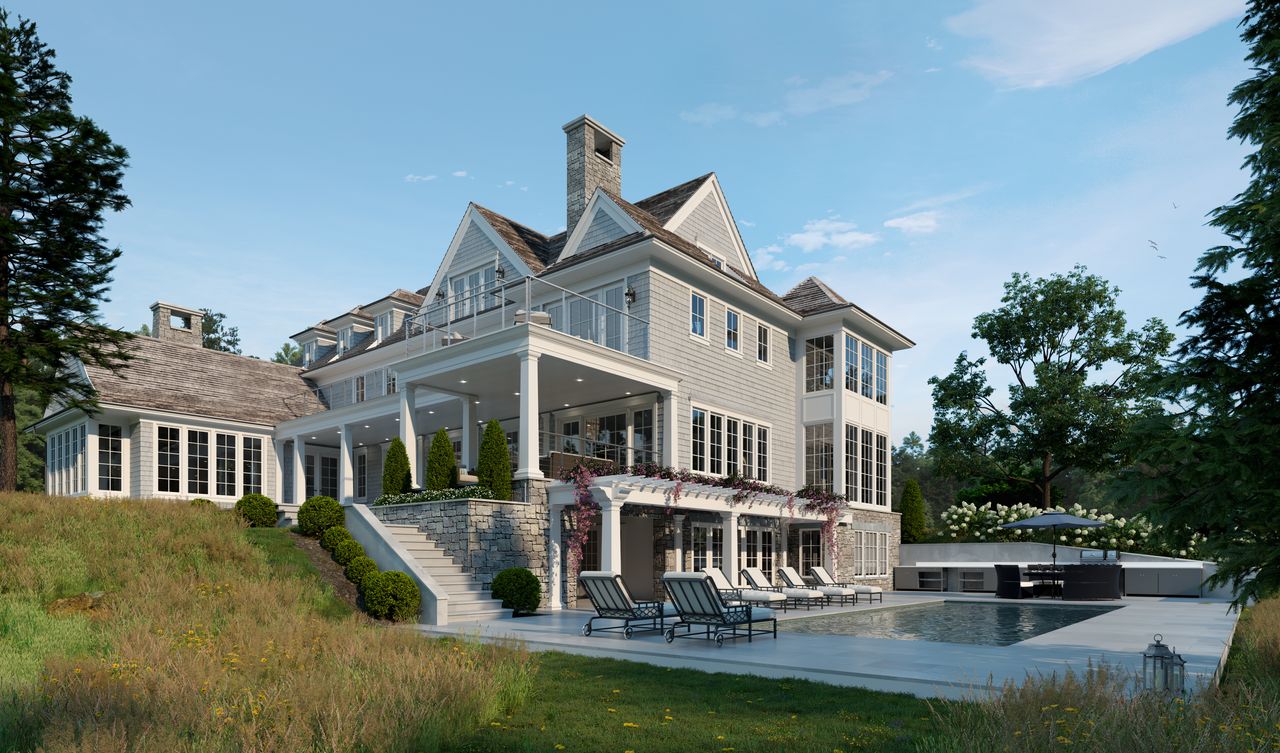#11285. Elegant Coastal Mansion with Multi-Level Neo-Colonial Facade

The presented mansion embodies classical American architecture in a neo-colonial style with elements of Hampton design. The facade is clad in light gray clapboard siding, characteristic of coastal architecture from the northeastern United States. The symmetrical composition of the main facade is emphasized by a central entrance with an elegant porch supported by white columns of classical order.
The facade demonstrates a distinctive multi-level composition with well-defined volumes. The steep-pitched roof with small gables gives the building a traditional silhouette. Stone chimneys provide an effective contrast with the main finish and serve as vertical accents. An abundance of large windows with mullioned panes and white trim creates a rhythmic pattern across the facade while ensuring excellent natural lighting for interior spaces.
Terraces at different levels organically connect the house with the landscape. The lower level with the swimming pool is framed by stonework that echoes the finishing of the staircase and the building's foundation, creating visual unity. Decorative elements such as pergolas with climbing plants and neatly trimmed shrubs give the composition a sense of completeness.
When designing your own facade, it's worth paying attention to the harmonious combination of materials (in this case, wood and stone), proportional arrangement of window openings, and the use of classical architectural details to create an expressive image. It's also important to consider the transition from the house to the surrounding landscape through terraces and steps, which significantly enriches the building's architecture.